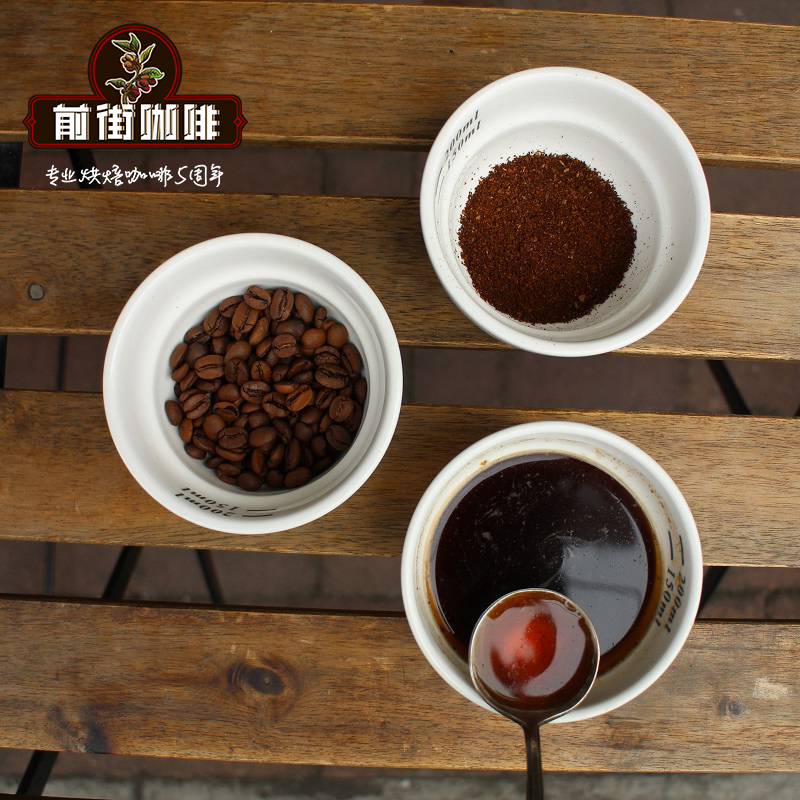What are the coffee beans of Arabica? what is the variant of Arabica bourbon tin pickup?

Professional coffee knowledge exchange more coffee bean information please follow the coffee workshop (Wechat official account cafe_style)
A variety evolved from the Arabica species.
[Typica] Tibica species
The species closest to the original species. The bean shape is slightly longer, like an elongated egg, known as Arabigo or criollo in Central America. It has a clean citric acid taste, sweet aftertaste, low resistance to leaf rust, not easy to take care of, low seed setting, long harvest period (harvest every two years) and low yield.
[Bourbon] bourbon species
The second species mutated from Typica is the closest to the original species as Typica at present. It was found in Reunion (formerly Bourbon) near Madagascar. Some coffee experts think that Bourbon is just a natural variant of Typica, nothing special! But in fact, Bourbon has its own characteristics. Like Typica, it has the same high-quality taste, like the sour taste of red wine, and a sweet aftertaste. You can tell from the leaves and bean appearance of coffee trees that Typica and Bourbon,Bourbon have wider leaves, while fruity coffee cherries are smaller and denser, so the appearance of beans is smaller and more round than Typica. In Kenya and Tanzania, new artificial varieties "SL28" and "SL34" appeared when Bourbon progeny was used for artificial mixing, which is famous for its good flavor. Although the seed setting amount of Bourbon is higher than that of Typica, the harvest time is also 2 years, which can be regarded as a variety with low yield.
[Caturra] Kaddura species
The mutant. It was first found in Brazil and began to be planted for commercial use in Minas Gerais, Brazil in 1937. The taste has the sour taste of lemon or citrus, but it is not as sweet as Typica in terms of sweetness, because the sweetness of Caturra depends on the number and dose of fertilizer applied by the grower, and it has high production capacity, but if the production capacity is to be maintained, it must be continuously fertilized and pruned, so the trees are short and branched. Although production capacity has increased, production is still limited because of the two-year harvest period and the high cost of care.
[Mundo Novo] Mondonovo species
Interbred with Bourbon. The height of the tree is more than three meters, making it difficult to harvest. There is a lack of sweetness on the palate and a bitter taste at the end. The advantage is that it is resistant to insect diseases, has high production capacity, but has high yield varieties.
[Catuai] Katuai seed
When mating with Mundo novo, the tree is short and Mundo novo is tall, and it is more convenient to harvest after improving the height after mixed. Taste soso, sweetness performance is similar to Cattura, fertilization techniques are closely related. Planting density is high, proper fertilization can have high production capacity, trees are resistant to wind and rain, and the harvest period is only 1 year, but the disadvantage is that the life span is short, only 10 years.
[Maragogype] Malaghipo species
Mutant. In a place called Maragogype in Bahia, Brazil, beans are found to be so large that they are called elephant beans. The taste is mild with slightly sweet and sour taste, and it is not easy to bake. Shallow baking is recommended, as deep baking will not show its characteristics. The output is very small.
[Pacamara] Parkmara species
Mixed with Pacas, he is a cousin.
[Pacas] Parks species
Interbred with Bourbon.
[Catimor] Cartimo species
Interbred with Caturra. Was found in Portugal in 1959. The palate is obvious and easy to distinguish, bitter acid with a bit of astringency, and the finish is often salty. It has high planting density and strong resistance to leaf rust, so it has become a variety with high yield. In the past, Catimor was grown in large quantities in Latin America on the advice of agricultural experts, and after a decade, experts confirmed that their advice was wrong because coffee farmers could not sell their beans at the right price.
[Geisha] geisha species
It is a kind of coffee peculiar to Panama. In recent years, it has been known as the "boutique queen" in just a few years. It can be regarded as the treasure of Panamanian coffee. At present, the output is low and the price is high. Coffee farmers claim to have only discovered it in recent years, but this is not the case. Not only it appeared in Panama as early as 1960, but many breeding units in Panama also have a lot of seeds. Willem Boot predicts that the variety of coffee in Panama will increase significantly in five years' time, and advises roasters not to rush. In 1931, it was found in southwestern Ethiopia, where there are many different names, such as Gesha. In 1931 and 1932, it was imported to Kenya under the name Abyssinian and 1932, respectively. In 1936, Kenya took the harvested seeds to Uganda and Tanzania for planting. In July 1953, Tanzania sent its offspring to Costa Rica, leaving the mother tree in its own country. It was formally cultivated in Panama through CATIE in 1960. The aroma is good, the finish is sweet and clean, distinctive, fruity, with bright sour fruit flavors, such as tamarind, mango and papaya, the taste is very supple and can be compared with Ethiopia's washed beans.
Important Notice :
前街咖啡 FrontStreet Coffee has moved to new addredd:
FrontStreet Coffee Address: 315,Donghua East Road,GuangZhou
Tel:020 38364473
- Prev

What is the effect of the origin of coffee on coffee? some questions about coffee
Professional coffee knowledge exchange more coffee bean information please follow the coffee workshop (Wechat official account cafe_style) 1. The influence of altitude on water temperature A: different elevations have an impact on water temperature, so it is impossible to guess, and a thermometer can also play a great role. two。 Silver skin affects taste A: different varieties of raw coffee beans are treated in different ways, more or less
- Next

How to learn how to make Coffee introduction to hand-made Coffee tutorial Starbucks Coffee-making steps
Professional coffee knowledge exchange more coffee bean information Please pay attention to the coffee workshop (Wechat official account cafe_style) hand-brewed coffee although it looks simple, if well controlled, you can definitely make a professional and authentic cup of coffee. In the following, based on my own experience, I will briefly explain the steps and matters needing attention in making coffee by hand. Introduction to the manual coffee course: weighing 15
Related
- Beginners will see the "Coffee pull flower" guide!
- What is the difference between ice blog purified milk and ordinary milk coffee?
- Why is the Philippines the largest producer of crops in Liberia?
- For coffee extraction, should the fine powder be retained?
- How does extracted espresso fill pressed powder? How much strength does it take to press the powder?
- How to make jasmine cold extract coffee? Is the jasmine + latte good?
- Will this little toy really make the coffee taste better? How does Lily Drip affect coffee extraction?
- Will the action of slapping the filter cup also affect coffee extraction?
- What's the difference between powder-to-water ratio and powder-to-liquid ratio?
- What is the Ethiopian local species? What does it have to do with Heirloom native species?

